Subscribe to our mailing list
Get the news right in your inbox!

Search the blog
Input your search keywords and press Enter.

Social Studies Aloft
Ideas, Resources, and Inspiration for Your Inquiry-Based Social Studies Classroom
- Road Trip Project for middle school
Looking for an engaging end-of-the-year project for Middle School Social Studies? One option I love is a Plan a Road Trip Project. It is a great fit for the end of the school year when you and your students have summer on the brain, because road trips and summertime go hand in hand.
A great project for middle school
Here are the reasons a Plan a Road Trip Project works so well:
- It has real-world connections. When students plan their road trip, they will be selecting from actual locations. Who knows, the project might even inspire some of their future travels.
- Students are learning about Geography without even realizing it. This project brings in different aspects of Geography to help reinforce Geography skills that are important for students.
- It incorporates student choice. Each student you teach can create a different road trip for their project. This student choice will help create high levels of engagement for your students.
- You can make it cross-curricular. You can easily include things like mileage calculations, costs of gas and other travel-related expenses, and journal writing. These will make your Plan a Road Trip Project a cross-curricular learning experience for your students.
- Making historical connections is easy. If you’d like to tie the project into historical events, you can require students to visit sites with historical connections, such as lunch counters significant to the Civil Rights Movement or Revolutionary War battlefields.
Supporting Student Success
As with any Middle School Social Studies Project, three keys to success are scaffolding, chunking, and communication.
- Scaffolding – Provide students with the support they need to complete the tasks in their project. You know your students best. Some examples of scaffolding they might need for this project are: 1) a list of possible sites to visit or 2) an example of how to calculate their mileage.
- Chunking – Give students mini-deadlines along the way to keep them from putting off the project to the last minute. I find it helpful to give students an exact task or tasks I expect them to complete in a class period, and if they don’t finish that task in class, it becomes homework.
- Communication – It is always helpful to email parents when students are starting a project, even if you expect students will complete the project in class. I like to provide parents with information like the project description, deadlines, and the purpose of the project. I tell parents it is their student’s responsibility to complete the work, but they can help remind their student about the project and check to see that their child is keeping up with all the mini-deadlines.
A Done-for-You Plan a Road Trip Project
If you’d like to use a Plan a Road Trip Project with your students, but want to save yourself a lot of time, check out this no-prep, digital Plan a Road Trip Project . It’s ready to assign to your students today.
Here’s what teachers are saying about this Plan a Road Trip Project:
- “I have some students who are distance, hybrid and some who are in person. This was a great lesson to have them be able to work together and share their ideas. I loved that I was able to place this in our online classroom and they could work at their own pace. When they are all finished they are going to be sharing their trip ideas with all. There are so many extension pieces that could be added to this if a person wanted. Thank you for your work on this and your willingness to share. It has been a lifesaver!” – Amanda F.
- “I used this during distance learning to practice research skills. What a well thought out, organized project. Super simple to follow and my students seemed to really enjoy it!!” – Jennifer P.
- “This was a very engaging and fun project spanning multiple days with my middle schoolers. The kids got to have fun while applying the skills we were focusing on. Easy to follow and would recommend to others.” – Taryn S.
Share this:
socialstudiesaloft
Related posts.

Six Tips for Using Google Classroom

Summer PD for Social Studies Teachers in 2024

Veterans day oral history project
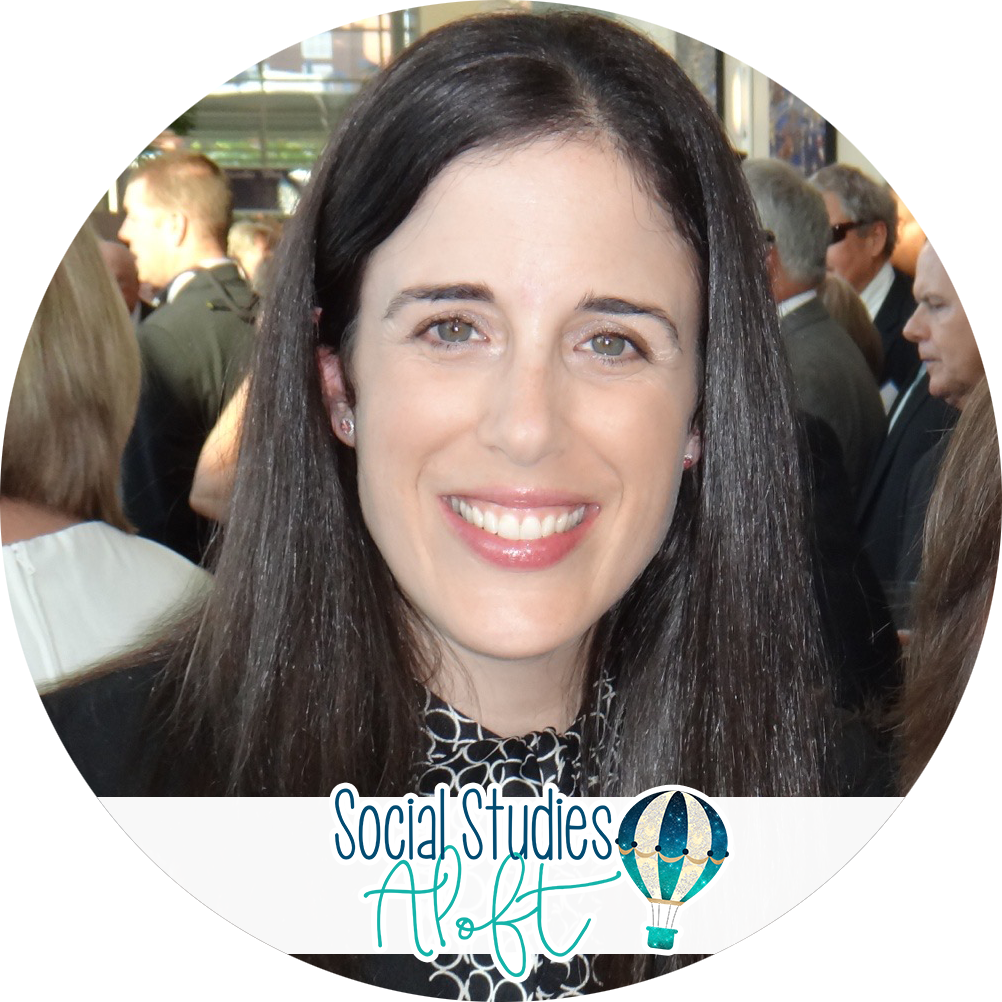
Welcome! I'm Anne. Thank you for visiting Social Studies Aloft. This site is dedicated to providing ideas, resources, and inspiration for inquiry-based Middle School Social Studies classrooms like yours.
Recent Posts
Teacher care crate review.
- Using More Primary Sources in Middle School Social Studies
- Getting started with inquiry in middle school social studies
Lesson Ideas
Teacher life, latest posts.

The Inspired Teaching Approach
Plan a trip .
The following activity is part of a series we’re creating to support students, teachers, and caregivers, during this unprecedented time. Read more about the project here . If you try this activity with your student(s), we’d love to see what you do. Share your journey via the #Inspired2Learn hashtag on your preferred social platform.
Created by: Pax Linson and Jenna Fournel Discipline: Language Arts, Social Studies, Math Age level: Upper Elementary – Middle Time: This project can take a few days or a few weeks to complete depending on how detailed you want it to be. Materials: A computer and internet connection.
Our ability to explore the world beyond our neighborhood may be hampered at the present time but that doesn’t mean our imaginations have to stay put. This activity was inspired by two friends who live in separate buildings with facing windows. Once a week they get on the phone and sit where they can see each other through the windows and as they talk they plan a fantastic trip to a faraway land. It doesn’t quite compare to actually going on the trip, but the escapism helps.
In the following activity we take this idea into an academic realm because planning an actual trip requires many of the skills we aim to teach young people in school. Luckily the internet can bring many of the sights and sounds of faraway places right into our homes!
What to do:
At a basic level, the assignment is to plan a trip from start to finish including where you wish to go and what you wish to see when you go there. But to turn this into a multifaceted learning experience we’ve outlined some of the subject area skills learners can build in the process.

- Determine the distance you’ll have to travel to get to and from the destination and from place to place throughout the itinerary. If the trip is something that can be done by car, figure out how much gas will be needed. If the trip will require air travel do a cost comparison of flights on different airlines.
- Provide your learners with a budget for a week long trip and have them outline how much they will spend each day on food, travel, lodging, tickets, etc. Here is a lesson plan from Scholastic that explores this activity.
SOCIAL STUDIES / GEOGRAPHY
- If you are teaching a grade level where students are learning about their home state or the US, you can focus the trip on particular regions they have studied.
- Have students identify the various landforms and regions they will travel through during the trip and find pictures online that capture the diversity.
- Students can still “visit” National Parks through virtual tours . You could focus the assignment on a national park and have them research things to do there, or include a visit to a national park in the itinerary.
- Bored at Home? Here’s a Massive List of Museums, Zoos, and Theme Parks Offering Virtual Tours ( Good Housekeeping )
- Check Out These Virtual Tours of Museums Around the World ( Timeout )
- 17 Famous Art Museums You Can Visit from Your Living Room ( We Are Teachers )
- Here’s a List of All the Virtual Tours You Can Take Right Now—for Free! ( Taste of Home )
LANGUAGE ARTS
- Have students figure out a format for detailing their trip plan. Will they use an outline? A daily calendar? Some online tool? A slide show presentation? This article explores some resources: Ready for Vacation? Here’s the Best Tech for Trip Planning ( New York TImes )
- After students have created a plan for what they will do each day, consider having them write a travel journal that explains what they imagine they see and do.
- Look at the menu for one of the restaurants you plan to visit on the trip and write up a description of the meal you’ll order there.
- Take a virtual tour of one of the destinations on your trip and write a description of something fun you do there.
- If you’re driving by car as part of the trip, look at a map of things you’ll pass by along one leg of the journey and write a short description of what you imagine seeing out the window as you pass through these places. What will the landscape look like? What kinds of buildings or natural features might you see?
- Create a music playlist that you’d use on this trip. Choose songs that relate in some way to the anticipated experiences of the trip and for each song title write a few sentences explaining your choice.
Inspired Teaching Connection:
In this activity, the product as well as the process provide Wide-ranging Evidence of Student Learning . Students are usually participants in trips but rarely active planners; this activity positions them as Experts which can awaken curiosity and perhaps even the seeds of some future explorations! In every fact of their planning the 4 I’s will be hard at work as Intellect, Inquiry, Imagination, and Integrity are all essential companions in travel.
See our instructional model here .

Micaiah Anderson
Community outreach specialist.
As a Community Outreach Specialist, Micaiah is responsible for program promotion and outreach support for Inspired Teaching events and workshops. Micaiah has a passion for collaborating with community members to build-power and connect. She is an educator with a heart for youth and has experience supporting students fight injustices within their schools and communities. She has a BA in Political Science from, the real HU, Hampton University & anticipates graduating in May 2024 with a Masters of Arts degree in Educational Policy Transformation from Georgetown University.
" I want to have a say in what happens to me."
Autonomy is the need for independence; the ability to make choices, to create, to explore, and to express oneself freely; to have sufficient space, to move around, and to feel unrestricted with opportunities to exercise free will.
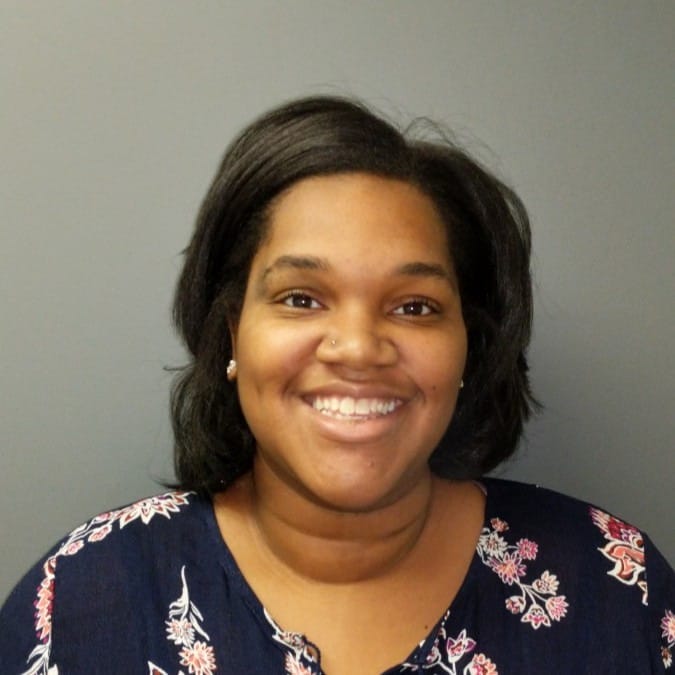
Brady Maiden
Outreach coordinator.
As the Outreach Coordinator, Brady helps maintain Inspired Teaching’s social media presence and supports the organization’s mission to connect with DC community leaders, educators, and parents. Brady has her Master’s in Public Policy from George Mason University and her BS in Political Science from Northern Arizona University. She is passionate about community, equity, and coalition building recognizing that learning and growing with the community at large is how we continue to be impactful.
What brings you joy in life?
I find joy in spending time with my friends and family and meeting new people. I like going to concerts and festivals, and finding new books to read.
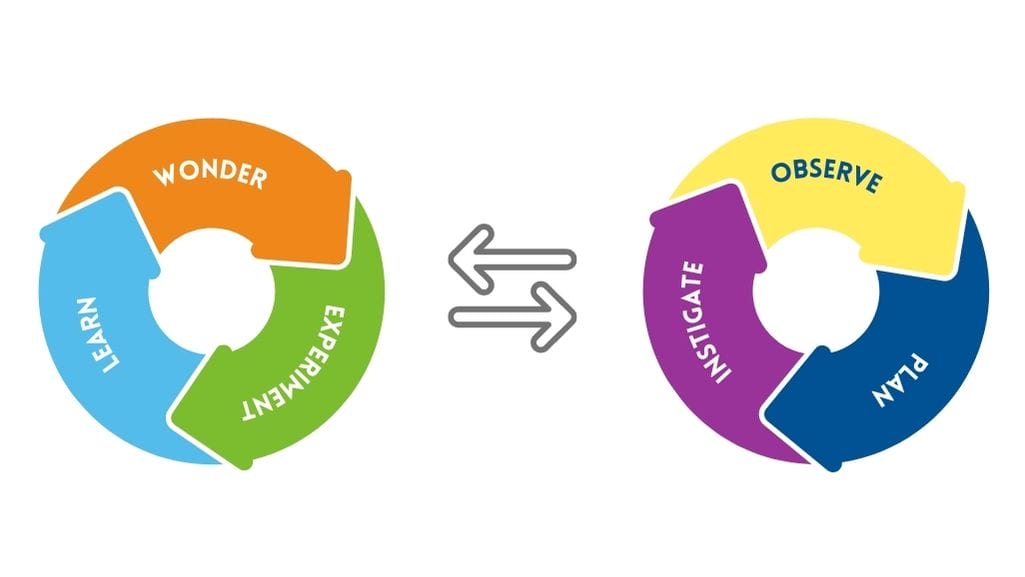
The Learner’s Cycle, Wonder-Experiment-Learn , and the Teacher’s Cycle, Observe-Plan-Instigate , comprise Inspired Teaching’s approach to engaging students in inquiry-based learning.
When they are engaged in the Wonder-Experiment-Learn Cycle, students are immersed in learning. They take the lead in designing authentic learning experiences around their own interests and their school’s standards of learning. Each discovery leads to a new question which in turn leads to more wondering and more learning. In the Wonder-Experiment-Learn Cycle, Learn is not a destination or an endpoint; it is a deeper understanding, leading to a deeper wondering and new possibilities that create new entry points to further exploration. The cycle continues because what students have learned generates more wonderings that require more experiments that foster more learning – and on and on.
The Observe-Plan-Instigate Cycle is t he work of an Inspired Teacher. While a student is expected to follow the Wonder-Experiment-Learn Cycle, the teacher joins them on the learning journey while following their own cycle of Observe-Plan-Instigate . This cycle ultimately serves to ensure an inquiry-based atmosphere is at play in the classroom.

Jaqueta Abbey
Teaching and learning specialist.
Jaqueta is the Teaching and Learning Specialist for Inspired Teaching. In addition to her current role with Inspired Teaching, Jaqueta is a first-grade teaching assistant. Her background features a variety of traditional and non-traditional experiences in the field of education, including working as an adjunct professor, teaching summer reading programs to children and adults, and tutoring children in the foster care system. Jaqueta earned a B.A. in Communication Studies from the University of North Carolina at Chapel Hill, and an M.A. in Interactive Media from Elon University.
Creative self-expression! In addition to my passion for storytelling, I love dancing of all kinds. I've studied belly dance, bachata, and Brazilian Zouk among other styles. I also enjoy glass fusing, crocheting, photography, and cross stitching. These art forms allow me to express myself and build connections with other people at the same time. I think life would be a lot less vibrant without artists and storytellers!

Michelle Welk
Communication & marketing specialist.
As Communications and Marketing Specialist, Michelle is responsible for finding and creating new ways to highlight Inspired Teaching and promote its programs in order to expand and deepen the organization's impact. Michelle has worked in communications in an array of settings, from creative agencies to state politics to national nonprofits. She has a BA in Journalism from Temple University in Philadelphia and is passionate about education, access, and equity.
My son, the beach, making a persuasive argument and good food!

Max Peterson
Real world history assistant teacher.
Max received his Bachelor’s degree in History and African American Studies from Boston University in May 2016. He has worked in museum curation at the Museum of the White Mountains in New Hampshire and the Smithsonian National Museum of American History. Max has worked with young people of varying ages from young children to young adults transitioning to college.
Feedback and Accountability
We grow through feedback and an understanding that the quality of our work is a reflection of what we are learning, but the shift to remote learning this spring disrupted a lot of the tools teachers were used to using to evaluate student growth. How might we do things differently this fall? Participants in this workshop will explore ways to bring meaningful assessment into the virtual and/or socially-distanced classroom and approaches to student feedback that strengthen motivation, and build relationships and achievement.
Time: half day Appropriate for: all educators at all grade levels
Sign up to learn more!
Email Address
Rethinking How We Spend Time
The teaching profession is already rife with time-consuming activities that don’t always benefit our students. Navigating the challenges of online, hybrid, or socially distanced learning means we have to be even more thoughtful about where and how we spend our time. In this workshop participants explore ways to make their work more efficient and the precious time they have with students more productive, and even enjoyable.
Centering Students and Checking Bias
Our assumptions about students often get in the way of meeting their needs. This is especially true when we don’t have the same opportunities to get to know them in person. What messages are we unintentionally conveying through our email or video communications with students and their families? What steps can we take to make online learning equitable and respectful for all our students? This workshop offers participants a framework for decision-making as they plan for the new school year, an opportunity to critically examine their practice, and concrete strategies for elevating student voice and engaging productively with students.
Setting Goals and Creating Structure Online
Can we have the same goals in online learning that we do in the physical classroom? Yes!...And, online learning offers different means of achieving them. Participants will evaluate specific goals in their curriculum and explore ways to structure their time with students to efficiently maximize impact.
Building Community in Uncertain Times
One of the big concerns teachers have about the upcoming school year is how they’ll get to know their students if their only encounters are through a computer screen or in-person but socially distanced. In this hands-on workshop participants will learn and practice strategies for community building online and/or in modified classrooms and craft a plan for learning all about their students in the first weeks of school.

Jenna Fournel
Director of teaching and learning.
Jenna Fournel has been involved with Center for Inspired Teaching since 2004 and has worked in the education field for more than 20 years. She began her career as a high school English teacher and has served as Director of Communications for both Inspired Teaching and the National Council of Teachers of English. Her overarching professional goal is to do what she can to make the world a kinder place. She believes investing in the education of our young people is the best place to start.
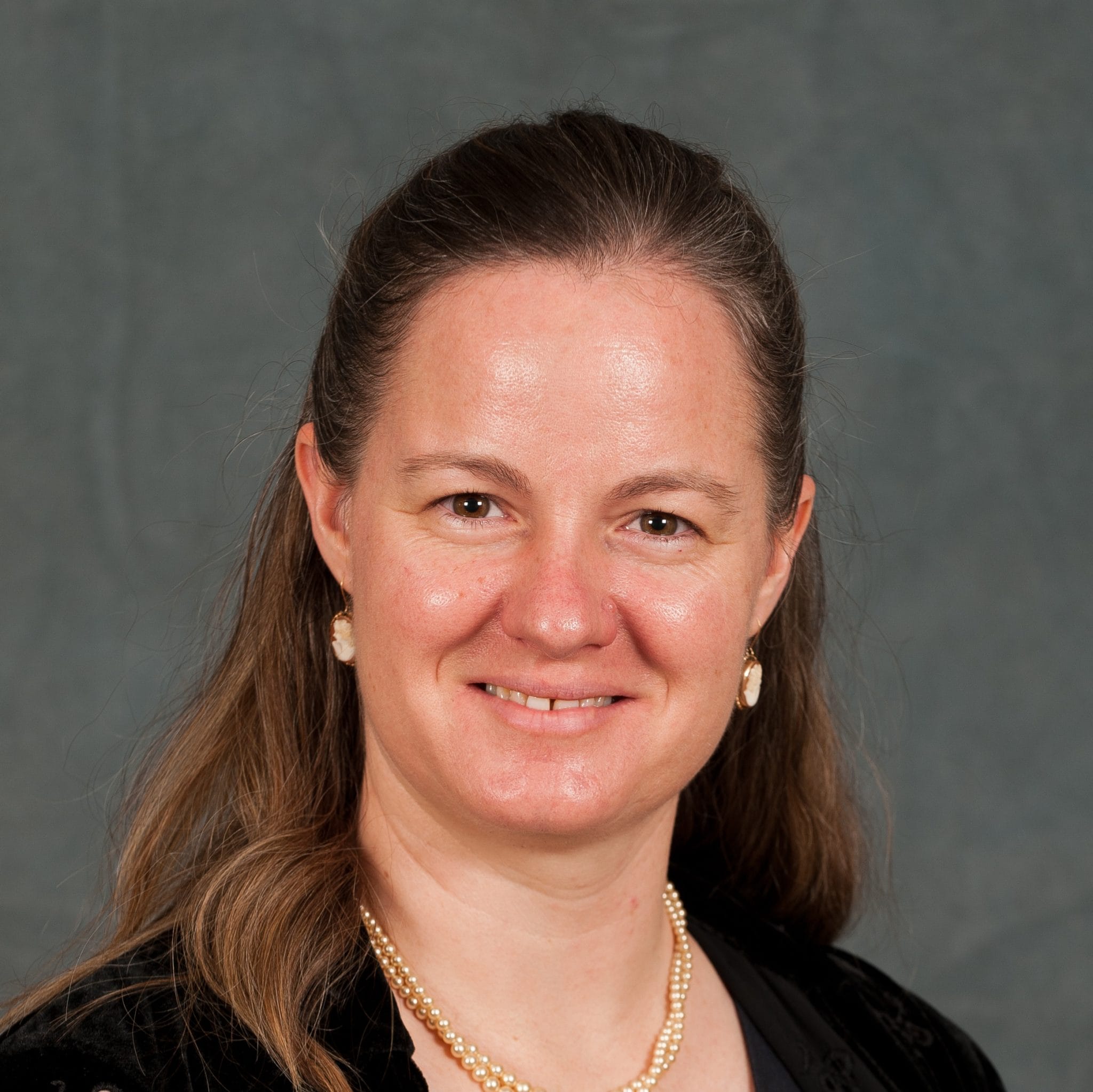
Bella Cavicchi
Teaching and learning coordinator.
As the Teaching and Learning Coordinator, Bella manages Inspired Teaching’s digital presence and supports the organization’s efforts to reach new communities of educators and students. She believes passionately in honoring the voices of young people, and in and outside of the classroom, she strives to create inclusive spaces where students’ curiosity can thrive. She holds a B.A. in Literacy and the Performing Arts from Brown University and an MPhil in Arts, Creativity, and Education from the University of Cambridge. Currently, she lives and works as a drama teacher in London, where she is inspired daily by her students' creativity!
Chair; CFO, Options Solutions
John Nolan is a finance executive with over 30 years of of experience at organizations of various sizes. He has served in “C” level positions at public, private equity and private companies in the SaaS, Management Consulting, Telecommunications and Computer Hardware industries. He has deep experience in implementing and improving controls and other financial processes across organizations.
He is currently the CFO and CCO of Options Solutions, LLC, an investment advisory firm. Formerly, served as the CFO of Determine Inc., an international provider of contract management and procurement software. Prior to that, John spent a decade as CFO and then CEO of Quadel Consulting, a provider of services to low income housing programs. John’s other professional experience includes 3 years at IBM and 15 years at MCI, where he ran Corporate Finance for the Fortune 100 company.
He holds an undergraduate degree from Tulane University, an MBA from the University of Texas at Austin, and is a licensed CPA. John’s work with non-profits has primarily focused on educational organizations. He served for five years as the Treasurer of the Blessed Sacrament School board in DC. For three years he was on the board of Imagination Stage (IS) of Bethesda, a youth focused arts and education organization. John also served for six years on the corporate advisory board of So Other Might Eat (SOME), the DC based poverty services organization that is greatly expanding its job training programs.
Mr. Nolan has spoken on financial leadership and cost analysis at Chief Financial Officer Magazine, Better Management Live and IDC conferences. The costing systems he put in place at MCI received the Enterprise Intelligence award from the software company SAS.
Want to bring Inspired Teaching to your team or school?
Access school or district professional learning funds: Some districts have professional learning discretionary funding for schools, or other funds that can be accessed for this purpose. Principals, district supervisors, curriculum supervisors, professional learning directors, and superintendents are good people to check with. Depending on how many colleagues at your school participate, and the subject of the course, you may be able to access school improvement funds as well (e.g., for a course in Relationship-Based Classrooms, which would address school climate).
Talk to your PTA representatives. These groups often have grants and money set aside for professional learning and school improvement.
Donors Choose is an organization where educators can post projects for donors to browse and fun, including professional learning that is used to further your craft. Go to their website to create a free account and find out more. Remember to post your project to social media, so that your friends and family can see the work you're doing and share it with others!
The NEA Foundation for the Improvement of Education awards grants that support the professional learning of public school teachers and faculty in public institutions of higher education. Grants may fund professional learning experiences, such as summer institutes or action research, mentoring experiences or lesson study. Professional learning must improve practice, curriculum and student achievement, and recipients must put professional leadership into practice by sharing what they learn with their colleagues. For specific information, visit the NEA Foundation’s application instructions page.
Fund for Teachers is unique in that it awards grants for professional learning based on the principle that the teacher is the one who knows what they need to grow as an educator. These grants are self designed and allow teachers to create their own professional learning opportunity based on what is most beneficial to their teaching in their own opinions. The application encourages educators to think about their objectives, motivations and the impact their particular plan of action will have on students. Applications are due in January.
The McCarthey Dressman Education Foundation provides Teacher Development Grants for individual teachers or small teams working in K-12 education. To foster insightful and innovative professional learning and growth, the grants allow you to implement new teaching methods and strategies in the classroom. Projects can take a variety of forms, but each of them must be geared towards having a significant and lasting impact in the classroom. Winners work closely with the foundation to implement their ideas and are awarded up to $10,000 for the first three years of the project.
Earn PLU hours while taking a workshop!
Washington, D.C. educators can receive PLU hours for participating in courses. Each day of a course is 6 hours of credit - we will provide a certificate upon completion of the course. Please see the OSSE certification website for more information.
Inspired Teaching Course Costs
A taste of inspired teaching, time & location, about the event.
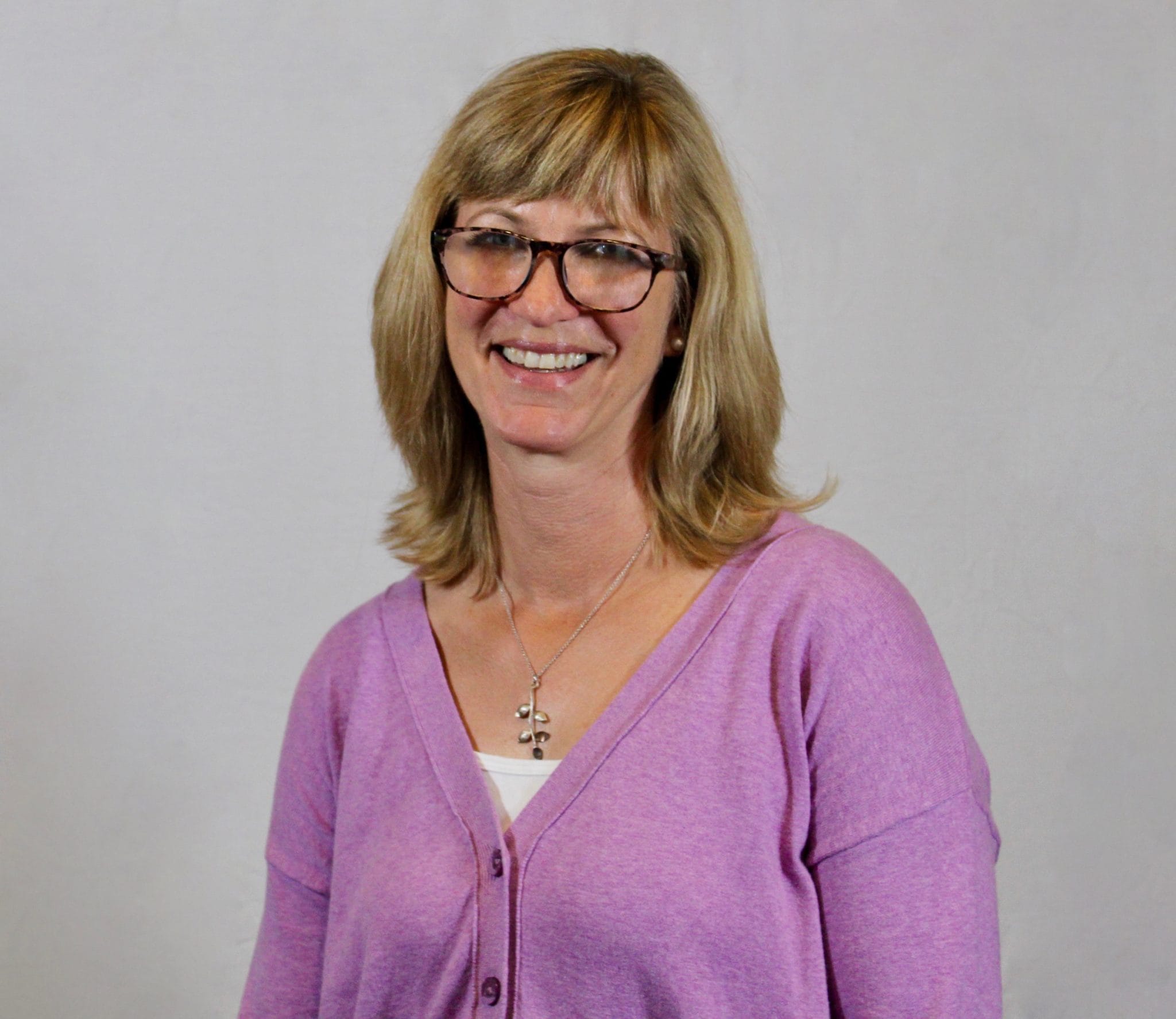
Christine Sheridan
Program grant manager.
Nothing brings me joy in life like spending time with family and friends. I love being active and spending time outdoors, making stained glass, and trying new foods!
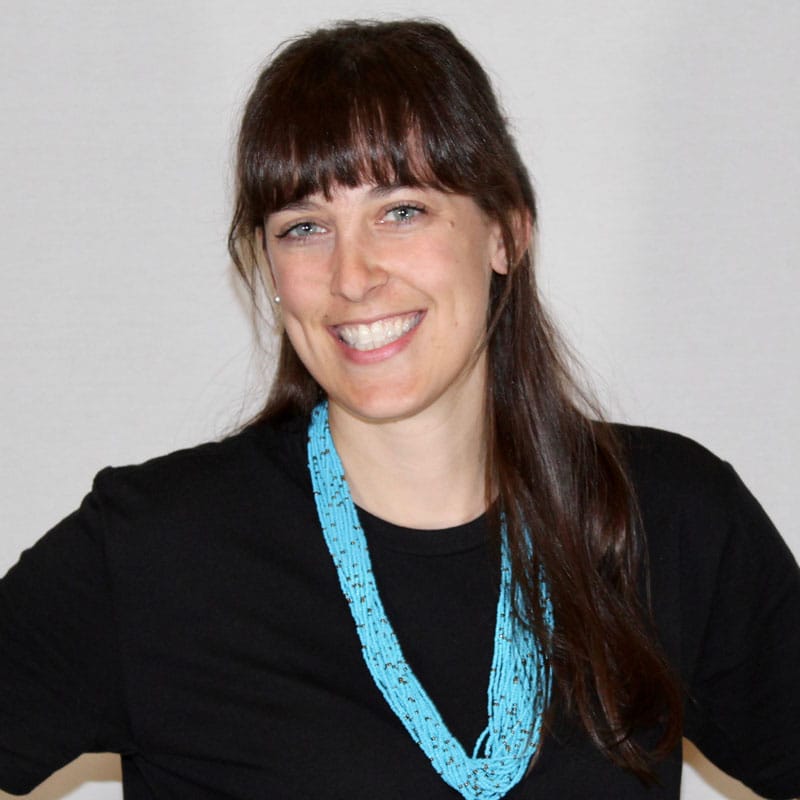
As teachers, we try to make school work challenging and provide real-world applications for what students are learning. Social studies curriculum provides a great opportunity to do this. Teachers cover geography , economics , and much more. Since we all know that the best way to learn is through doing, creating a travel plan can help students apply these types of skills to their everyday lives. They can explore new places as well.
Having students create a travel plan (with a clearly defined rubric) is an excellent way to spark their imaginations and get them excited about what they are learning. If students have the motivation to learn about geography, climate, or cost of living of an area, we can satisfy the state and federal mandates in a way students will enjoy.
When students begin designing their travel plans, have them start by thinking of their dream vacation. Let them determine where they would like to travel and how they want to get there. The variables that can be included can be endless. You might want students to have a budget, and plan their trip accordingly. Perhaps you would prefer to assign students different amounts of cash to spend. The possibilities are sure to ignite students in discussion and maintain interest. Imagine what your students will be open to learning if you tell them they can plan the trip using $500,000 and a Ferrari.
This is more than just a “dream assignment” filled with fun hypothetical adventures, however. Students should begin by calculating the gas mileage for their “road trips,” charting the geography as they navigate their vehicles (planes, trains, automobiles, boats, etc . . .), and account for seasonal weather conditions and changing political climates across the world. Like anything that is involved and highly interactive, teachers should plan extensively before beginning the project and correlate their rubric to align with however many days will be spent on the assignment. Necessary background information will also have to be provided before you allow students to jump right in.
The great thing about using a travel plan project in the classroom is how versatile it can be. With appropriate scaffolding, teachers can use a travel plan to address standards and curriculum in any grade level and subject. Schools that have teachers working together in a “team” setting in which English, social studies, and math teachers work closely together with the same students, could plan a group project in which students work on each subject area’s respective portions in that designated class (ie: calculating gas mileage is done in math, analyzing geographic change in social studies, creating a travel brochure for English, etc).
The possibilities are truly endless for sparking student interest in a variety of topics. Students have to make a variety of decisions based on economics. They have to figure out how much gas costs and decide which car to purchase based upon their finding. It’s not going to get much more “real world” than that. Students are able to have fun with the project as well.
Students can design posters, travel brochures, reports, models, diary entries, postcards, and so much more. The literary bent of the project can be graded based on the six traits of writing and writer’s workshop can be utilized to provide feedback and monitor student progress. Competitive elements can also be introduced and the project could turn into a game.
The benefits of adding a travel plan project into your curriculum are many. All levels of Bloom’s taxonomy are touched upon extensively, instruction is definitely differentiated, multiple intelligences are incorporated, and student engagement is high. Both students and parents alike will rave about how wonderful a successful travel plan was. The knowledge learned is something that will be remembered and useful for years to come! Here are more activities you can do to spark the interest of students to create a travel plan.
Travel Plan Lessons and Activities:
The Art of Budgeting
Students learn how to set up and maintain a budget.
Time Management
Students create a time management plan for themselves, and critique others to get the maximum amount out of their time.
Travel Album
Students create a class travel album of places they have been. This could spark an interest in new places.
The Amazing Race
Students use road maps to find more clues and get to different destinations much like the TV show The Amazing Race.

Start Your 10-Day Free Trial
- Search 350,000+ online teacher resources.
- Find lesson plans, worksheets, videos, and more.
- Inspire your students with great lessons.
Lesson Search Terms
- "Social Studies"
- Elementary Social Studies
- Middle School Social Studies
- Social Studies Lesson Plans
- Social Studies Lessons
- Social Studies Activities
- Esl Social Studies
Recent Family History Articles
- Travel Magazines in the Classroom
- Comic Books in the Classroom

6 Budget Projects for Middle School Students (Make it Fun!)
By: Author Amanda L. Grossman
Posted on Last updated: May 24, 2023
Check out these budget projects for middle school students to self-discover lots of budgeting lessons (while having fun).
A budget project for middle school students can be just the thing to turn textbook money math practice and abstract budgeting concepts into real-life money lessons your students get to self-discover.
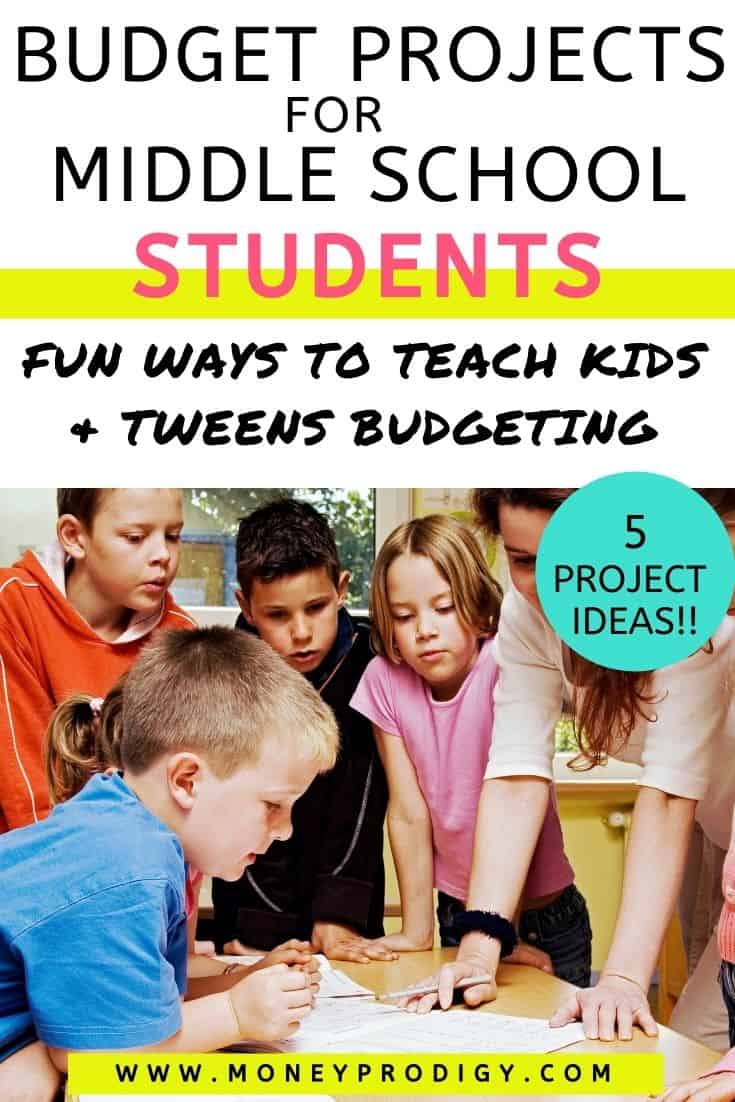
Use these budget project ideas for middle school students to learn things like:
- How to tell the difference between needs and wants
- Money math (counting money, calculating expenses, making change, etc.)
- How to plan something out ahead of time
- How to use a limited pot of money
Let's get started!
Budget Projects for Middle School Students
Read through each of these budget projects for middle schoolers, and see which you could take and adapt for your own classroom.
Hint: you also might want to check out these fun money activities for middle school students , personal finance project examples , and my article on how to teach budgeting .
1. Classroom Pet Budget Project
Do you have a classroom pet (or will you be getting one in the future)?
Great. Let’s tie that into a budget project for your middle schoolers.
Step #1: Create Your Survive & Thrive List
Part of budgeting for kids is understanding needs vs. wants . That’s why I want you to work with your students to create two supply lists:
- Survive List : On this list, include each thing your pet needs in order to survive. Like water, food, a clean place to sleep, exercise area, any medicines, etc.
- Thrive List : On this list, include a few “extras” that, while your classroom pet doesn’t need , could certainly make life more fun or more comfortable for them. For example, you might include a hamster ball for exercise, or a hamster tunnel for play.
Research the cost for each item, and include it in a pricing column to the right.
Hint: dealing with a younger class? Write your needs and wants items all over the board, and have your students raise their hands and tell you which items belong on the “survive list” and which items belong on the “thrive list”.
Step #2: Come Up with a Weekly or Monthly Classroom Pet Budget
How much can your classroom spend to take care of the pet each week or each month?
Estimate how much food the animal will need each week, and how much that will cost, plus any other needs.
If possible, set aside a few extra dollars each week added to a “Pet Slush Fund”.
Step #3: Use a Monopoly or Pretend Money Pay System
Get your students involved with the costs of the pet.
Pick a time each week when you’ll go over your money stats with everyone. Start with picking out free printable money (or Monopoly money), and counting out one weeks’ worth for the pet costs.
Each week, discuss with the classroom how much was spent last week or month (illustrating with the pretend money), and replenishing of the money for the following week/month.
As the pet has other needs, such as vet costs, discuss the need to save up for them. As the slush fund grows and is not being used, go ahead and let the class decide on a “thrive list” item to get for the pet.
Tweak as needed for your classroom and educational objectives! For example, you could create pet groups, and each group takes a turn with being the pet treasurer for the week. They report on how much money is in the pot, and how much will be added on X date. They also give a status update on supplies (such as food and bedding), and what needs to be replenished in the future. They make the pretend transaction that you, as teacher, will make in the store – using the printable money and coins.
2. Creating a Classroom Economy (Grades 3-5)
Scholastic has a great, year-long budget project for your classroom where you set up a classroom economy. Kids are given job roles, and salaries.
Through a classroom store, kids will put concepts like saving, opportunity cost, supply and demand, and inflation in practice .
Lesson plans include:
- Introducing the Classroom Economy
- Opening Your Class Store and Bank
- Using the Class Store to Teach Economic Principles
- The Student Economist
Tons of free worksheets as well, such as a credit and debit log, class store math worksheets, blank check templates, opportunity costs and tradeoffs, etc.
Hint: you'll also want to check out my article on how to teach budgeting .
3. Tie in a Budget Project with Market Day
I created a market day lesson plan on pricing , so that your students can get guidance on how to price their product.
Step #3 is really critical in this, because it is all about how much it costs for them to make one unit of their product.
Using this information, you can tack on a budgeting component to your next market day. As students sift through market day ideas for kids to sell and make , have them stick with a budget (or make one of their own, depending on how much they can afford to put into this).
Then, help them price, and how many units they would need to sell at those price points to make a profit.
Psst: do your students need some product ideas? Here are 22 simple things for kids to make and sell , and 17 boy crafts to sell .
4. Budgeting for a Trip (Grades 6-8)
Scholastic has a great, mini-budgeting project where students are asked to use $4,500 to plan a cross-country road trip.
With the help of the free printables, Calculating Vacation Costs and Project Outline: Going on Vacation, students will work on pricing out lodging, food, gas costs, etc. while handling the logistics of planning a multi-city trip.
What I like is kids are given choices for each category of vacation spending, and the cost is dependent on what they choose.
For example, they can choose a small compact vehicle that gets 35 mpg, a family sedan that gets 25 mpg, and a mini-van that gets 15 mpg. Think about the discussions that this could spark: tradeoffs between comfort and gas costs, figuring out who will sit where (or maybe compromising and rotating the passenger seat/driver), etc.
5. Shark Tank Project for Middle Schoolers
Have you heard of the hit show, Shark Tank ? You know, where entrepreneurs of all ages pitch their startup and companies to a group of investors, hoping they’ll get more funding?
I’ve got a whole article filled with shark tank lesson plans you can work through with your middle school students.
Granted, they’re very entrepreneurial-based, so you’ll need to adapt them to help your students learn how to budget.
For example, you could ask your students to create a list of start-up costs for a business idea they want to pitch.
6. Cost-Per-Serving Budget Project
Task your middle schoolers with creating a dinner meal that costs less than $2.50/person for a 4-person family.
You’ll need to prep this ahead of time by asking students to bring in grocery store circulars and coupons that they can find.
Divide your class up in pairs or groups, and provide each set with at least one grocery store circular (more than one is better, so that they can really shop around).
Download the menu from a local restaurant, and print it out (one for each set of students). Let the students choose one meal for each of the 4 people in their family to eat. Add up the total restaurant cost (plus tip – great time to discuss how to leave a tip!).
Give them a set of coupons and scissors, and the following scenario:
You have a family of 4, and need to come up with a dinner meal plan that comes in at under $2.50/person.
A great resource is MyPlate.gov , where you’ll find printouts such as blank meal plan calendars, dietary guidelines, meal ideas, etc. Apps such as the SuperCook Desktop version allow people to put in certain ingredients and it spits out recipes.
You can create your own rules about healthy eating. At a minimum, you could require that the meal includes:
- A side dish with vegetables or fruits
Certain ingredients will not cost you money from your budget, because most households have these on hand already: cooking oil, salt, and pepper.
Your students will need to calculate the cost of each food item in the recipe, and then divide that by the number of people eating the meal to find out the cost/person.
BudgetBytes.com has an awesome breakdown of how she prices out cost/serving, including the following info and rules you could use:
- Use $0.10 for herbs and spices
- You can use online shopping sites for pricing help, too (in case you don’t have enough circulars, or time to collect them)
Possible questions for discussion:
- How much would it cost for your family of 4 to order from a local restaurant? How much does this family save by cooking the homemade meal instead of eating out for dinner (subtract your total homemade meal cost from your total restaurant cost)?
- What ingredient costs surprised you, as either being more expensive than you thought, or much cheaper than you thought?
- Your total cost per serving came in at $____/person. What was the total cost of your groceries for all the ingredients?
- What can you do with the leftover ingredients to keep your food costs as low as possible?
If you have the time and resources to go through a budgeting project more than once, then please do so! Kids can take the lessons they learned from doing it the first time through, and make changes the next time through. Either way, even doing one of these budgeting projects will help your students with their money management and budgeting skills.
- Latest Posts
Amanda L. Grossman
Latest posts by amanda l. grossman ( see all ).
- 50 Banking Activities for Kids (Student Financial Literacy) - February 14, 2024
- 14 Christmas Activities for High School Students (they’ll Actually Find Cool) - December 1, 2023
- 3 Fun Selfie Scavenger Hunts for Teens (Christmas, Fin Lit, etc.) - November 27, 2023
Pre-Algebra Road Trip Project
By: Author Sarah Carter
Posted on Published: July 22, 2012 - Last updated: December 3, 2022
Categories Projects , Ratios/Proportions
Well, since I’m preparing to start my first year of teaching, I decided that I really needed to finish posting the last few projects I did during my student teaching.

During my last week of student teaching , my cooperating teacher asked me to come up with a creative way to review some of the 8th grade math standards.
A lot of my students had been struggling with the concept of proportions. With lots of practice, they had been improving, but many students still weren’t comfortable with solving proportions.
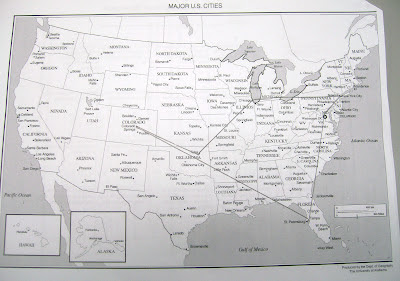
I wanted to show students that proportions were definitely applicable to their lives. So, I created this pre-algebra road trip project. It actually turned into a 3-part project because the students were enjoying it so much.
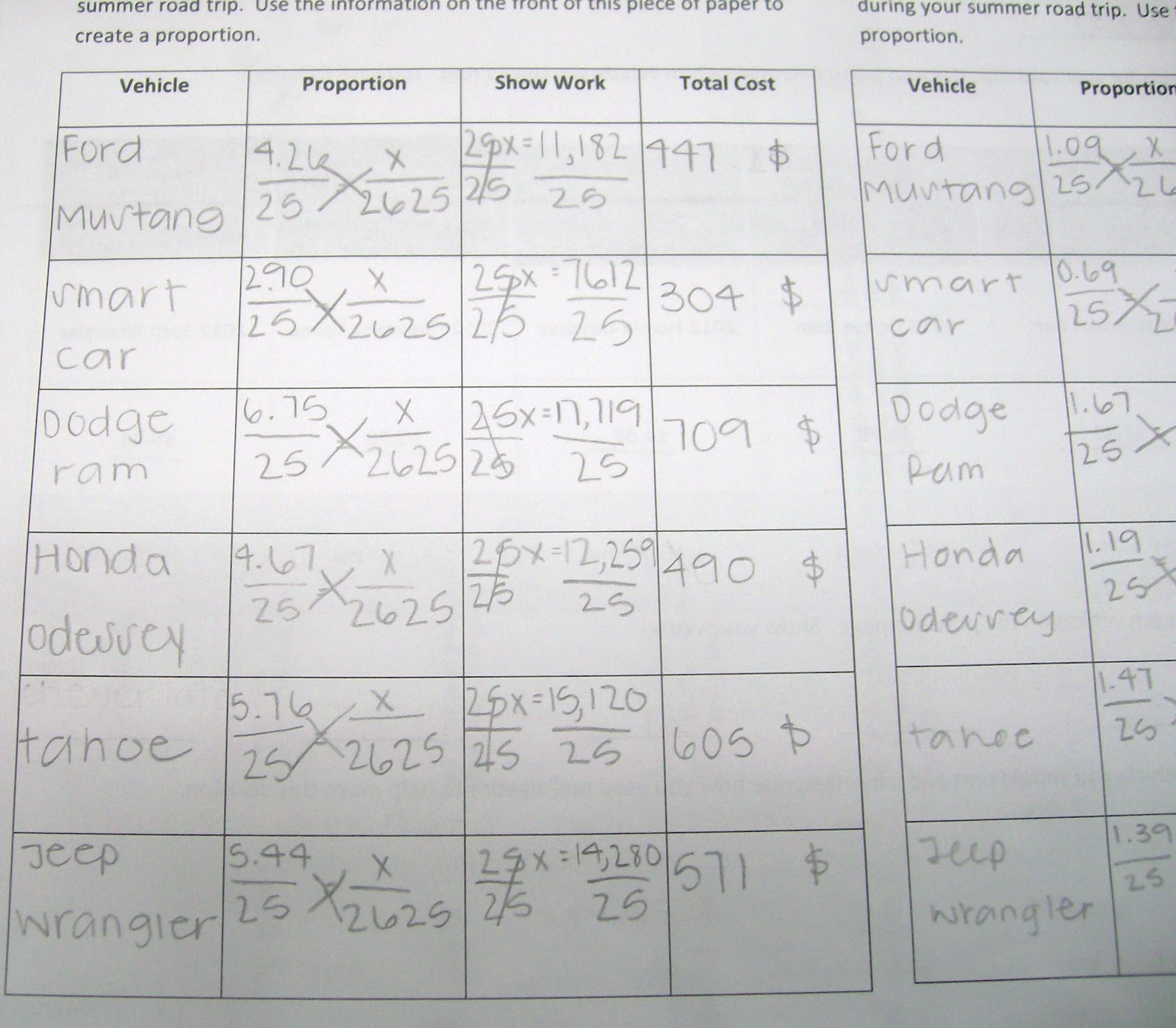
Each student chose 5 cities to travel to on their road trip. Using a ruler, they drew out their route on a US map. Then, using the map scale, students determined the length of their road trip in miles.
Day 2 of the road trip project was spent using gas mileage and fuel costs for various vehicles to determine which vehicle students would take on their road trip.
On Day 3, we calculated food costs, hotel costs, and rental car costs. By the end of the 3-day project, students were much, much, much more comfortable working with ratios and proportions.
It was an amazing experience to see the light bulbs go off with so many of my students.
Looking back at Day 2 and 3, there are a ton of little things I would change. I actually changed the rental car problem on Day 3 because my students were having a ton of trouble with it. I just did a flat rate per day.
This pre-algebra road trip project is easily adjusted based on your time limitations and the level of your students. This was never intended on being a 3-day project. It just sort of evolved into one.
My 8th graders really enjoyed it. My cooperating teacher enjoyed it. My University Supervisor even observed me on Day 3 of the project.
The lesson was a little more chaotic than I had planned, but my supervisor complimented me on the project. He even asked for electronic copies of the files to send to some math teachers in China.
Edited to Add : I have also done this with my Algebra 1 students.
Since I had already done this project with 8th graders, I thought my Algebra 1 students would be able to whiz right through it. I was wrong. I had to teach many of my students how to read a ruler.
Rounding to the nearest quarter inch was a disaster. And, the questions students asked me made me feel more like a geography teacher than a math teacher.
These are actual conversations I had with my Algebra 1 students during this activity.
Me: Class, today we are going on a road trip. If we’re going on a road trip, that means we will be traveling on… Class: Roads! Me: Yes, so that means we can’t travel to… Class: Hawaii Student 1: Why can’t you drive to Hawaii? Me: Hawaii is an island. That means it is surrounded by water. Student 2: Why does Hawaii look so weird? Custodian who just happens to be emptying the trash at this point: Hawaii is a series of small islands. Student 3: Do you mean you can’t drive between the little islands? Custodian: No. When I was in Hawaii, we traveled between the islands by taking ferries.
Student 1: Is Washington, D.C. here? [The student is pointing at Washington state.] Me: No. Student 2: No, Washington, D.C. is in Virginia.
Student 1: I think this map is wrong. Me: Why? Student 1: Oklahoma City should be above Tulsa.
Student 1: Do you mean Nashville, Tennessee is in the United States? Me: Yes. Nashville is in the U.S. Student 1: I’ve heard of it before, but I didn’t realize it was in the U.S.
I required my students to write both the city and the state they were visiting on their assignment. One student wrote that she was traveling to New Jersey, PA.
Free Download of Pre-Algebra Road Trip Project
Road Trip Project Day 1 (WORD) (4471 downloads )
Road Trip Project Day 2 (WORD) (3331 downloads )
Road Trip Project Day 3 (WORD) (2895 downloads )
Road Trip Project Map and Rubric (PDF) (3153 downloads )
Video with Instructions on Completing the Road Trip Project
I ran across a YouTube video that someone created to walk students through completing the Road Trip Project. I thought I would link it here in case it was of use to anybody.
More Activities for Teaching Ratios and Proportions

Wednesday 4th of September 2019
Any chance you have the CC standards that are associated with this project?
Monday 27th of May 2019
Great project!
Friday 25th of January 2019
FOR STEP FOUR OF DAY ONE DID YOU HAVE THE STUDENTS USE THE UNIT CONVERSION OF MILES TO INCHES AND THEN SET THAT EQUAL TO THEIR DISTANCE?
Tuesday 30th of October 2018
i think she used a lot of creativity to make this project.
Monday 20th of February 2017
what is the cost/gallon of the fuel? Where do you get it from?
Thursday 18th of May 2017
I'm was the one that needed help that says anonymous
And my email is eliasdaniel4599[at]gmail.com, thank you
Hello their Sarah I'm having trouble with this project if you could plzz send me the answers like all of it plzzz:( this is due Friday my grade is at a D right now just plzz I'm sorry for bugging like asap lol thank you
Sarah Carter (@mathequalslove)
Friday 3rd of March 2017
I got the fuel data for 25 miles from https://www.fueleconomy.gov/
Get your free sub plans here →
Let’s Plan a Vacation- Math Project
So it’s finally the end of the year! We have learned all the standards, and now we need to figure out what we are going to do with the kids to keep them engaged. Well, let’s plan a summer vacation! This math project is a great cooperative activity to get your kids excited about doing math.
How it Works
This math activity is great to do in groups of 3 to 4 kids. A group of students will get a city and a budget sheet to plan a vacation for themselves and a friend. They must pick their flight, car rental, hotel, activities, and food while they are on vacation. They must do all the activities while staying under their budget of $2500.
It is awesome to see all the kids working together. Each child has a job so that they stay engaged. There is a mathematician that does the calculating, the recorder that writes on the budget sheet, and the checker that checks all the calculations. There are also other jobs that can be added if there are more students in a group.
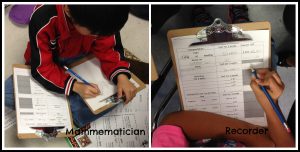
My students really enjoyed this activity. We spent 2 class periods working on the budget. It took approximately 90 minutes. These were 3rd-grade students, so older students might not take as long. I am attaching a sample of the project. You can try it out by clicking on the picture below.
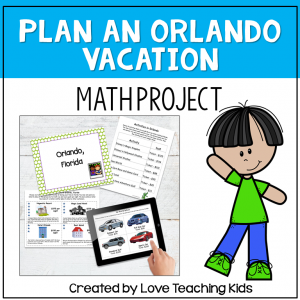
If you like the sample you can purchase the full Plan a Vacation activity with all 7 cities at my store or by clicking on the picture below. It also includes a digital version that you can use with Google Classroom.

Good luck with the end of the school year. Let me know if you tried this project with your students.
- Read more about: math
You might also like...
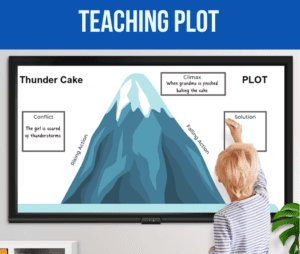
Teaching Plot With Picture Books Made Easy
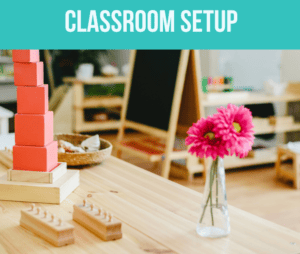
Classroom Setup 101: Creating an Engaging and Productive Learning Environment
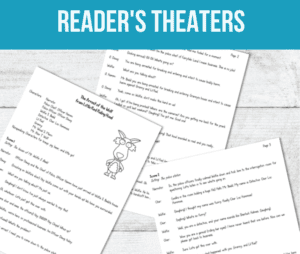
How to Use Reader’s Theaters in the Classroom for Fluency and Fun!
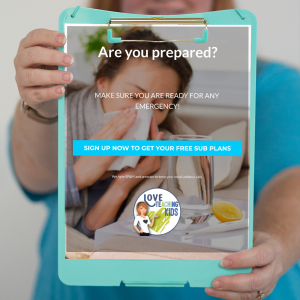
Meet Jennifer
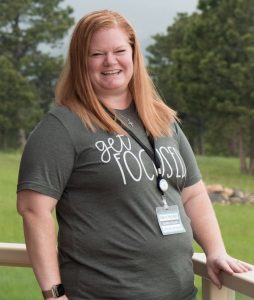
I create activities for teachers so you don’t have to spend your precious time doing it all yourself and you can get back your evenings and weekends for your family.
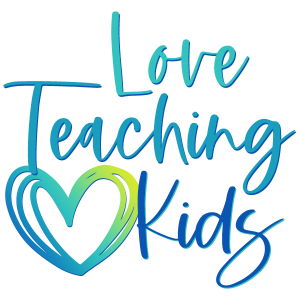
© Love Teaching Kids • Website by KristenDoyle.co
Project-Based Learning Videos
PBL Institutes and 21C Conferences | PBL Trainers | PBL Videos | Study Tours and Site Visits | PBL Handbooks and Guides
Updated: July, 2018
Here is my selection of the best videos on PBL in schools. This selection includes the outstanding series from edutopia and the best videos from PBL schools on their pedagogy, protocols, processes, and systems for teaching and learning. Besides the videos below, teachers and school leaders can find excellent collections of videos at the Buck Institute for Education , at the George Lucas Educational Foundation's edutopia , and at the Teaching Channel Deeper Learning Series . -- Bob, March, 2016
1. Five Keys to Rigorous Project-Based Learning
This is the intro video to an excellent series from edutopia that will give teachers an excellent conceptual understanding of PBL and its key elements and practices. Below you will find individual videos on each of the five keys (Real-World Connections, Rigorous Projects, Collaboration, Facilitating Learning, and Assessment). You can also see these 5 videos on the edutopia web site .
2. Real Projects, Real World, Real Learning
This is a powerful 10-minute video made by Coppell Independent School District (Coppell, TX) to describe and illustrate, through the voices of students and teachers, the PBL process at New Tech @ Coppell High School. The PBL process includes the Entry Document, Knows and Needs to Know, Driving Question, Next Steps, the Social Contract, Journaling and Scaffolding, Workshops, Collaboration, and Presentations. The videos shows a plethora of scenes of students at work in classrooms and project planning rooms. The class portrayed is a team-taught humanities class. The video also includes some commentary and footage of a math teacher and classroom.
3. Project-Based Learning: Success Start to Finish
This video from the edutopia Schools that Work series is a case study of Manor New Technology High School from June, 2012. It was part of a profile that includes several supporting documents:
- Case Study: Project-Based Learning: Success Start to Finish
- Video: What Makes Project-Based Learning a Success?
- Research-Supported PBL Practices
- Resources and Tools for PBL Start to Finish
- A Step-by-Step Guide to the Best Projects
4. The Building Blocks of Project-Based Learning
The Building Blocks of Project-Based Learning (14 min) profiling Tech Valley High School (Albany, NY), a New Tech Network school, is from the Teaching Channel Deeper Learning Series, March, 2014. Also watch these specific segments: Collaborative Teaching for Interdisciplinary Learning (5 min), Critical Friends: Looking at Student Work (6 min), Group Contracts for Collaborative Work (2 min), Student Profile: A Self-Directed Learner (4 min), and Milton Chen on Project-Based Learning (5 min).
5. Learning Through Projects
Learning Through Projects (video opens in new tab) from the ASCD series, "Teaching the Adolescent Brain". Segments from Sacramento and Napa New TechHigh Schools. Note: Even though the classroom computers are dated, this video from 2006, is one of the best PBL education videos ever made and received a national award.
6. Project-Based Learning, 21st Century Skills, and Assessment
These 3 videos by the Pearson Foundation in 2009 on Project-Based Learning, 21st Century Skills, and Assessment at Napa New Technology High School are especially effective in demonstrating how well-designed projects embed state standards and 21st century skills such as the 4 Cs (Communication, Collaboration, Creativity, and Critical Thinking). The video shows how students are assessed on these skills, see their assessments on a just-in-time basis, and become self-directed, self-assessing learners.
7. Project Based Learning: Explained
The Buck Institute for Education commissioned the cutting-edge advertising agency, Common Craft, to create a short animated video that explains in clear language the essential elements of Project Based Learning (PBL). This simple video makes the essential elements of PBL come alive and brings to light the 21st Century skills and competencies (collaboration, communication, critical thinking) that will enable K-12 students to be college and work-ready as well as effective members of their communities. Learn more about Project Based Learning (PBL) at : http://bie.org/ .
The Buck Institute for Education produced these videos to showcase examples of Gold Standard PBL projects from a variety of grade levels, subject areas and settings:
- Tiny House Project - Grade 3 interdisciplinary - Cheryl Bautista, Katherine Smith Elementary School, San Jose, California
- The Finance Project - High School Math - Telannia Norfar - Northwest Classen High School, Oklahoma City, Oklahoma
- March Through Nashville Project - Middle School ELA/Social Studies - Kimberly Head-Trotter, McKissack Middle School - Nashville, Tennessee
- Taking Care of Our Environment Project - Transitional-Kindergarten Interdisciplinary - Sara Lev, Citizens of the World Charter School - Los Angeles, California
- Revolutions Project - High School World History - Erin Brandvold, Impact Academy of Arts and Technology, Hayward, California
- Water Quality Project - High School Chemistry - Rayhan Ahmed - Leaders High School, Brooklyn, New York
Five Keys to Rigorous Project-Based Learning , Parts 1 to 5
Sunrise Middle School
Recent Posts
13th anniversary, mid-year test results show significant progress, sunrise outperforms other schools on state test, sunrise is now enrolling for 2024-2025.
if interested, please call the school at 408-659-4785 and leave a message, OR enroll online here
In response to the Coronavirus, we have added a page with some available resources to help families out in these hard times
Sunrise Middle School is a charter school at 24th and Julian Streets, San Jose, California for students who are seeking a holistic, meaningful and stimulating education. We believe school should be a place where youth want to come each day, excited to learn about life and themselves, where they’re allowed to question and challenge the world around them, and where they feel empowered and respected for who they are. We welcome all fifth through eighth grade youth. Please call the school to arrange a visit or to enroll, (408) 659-4785. We operate under a charter with the Santa Clara County Office of Education.
Quick Links
- Seven Principles
- Five Pillars
- Outdoor Program
- After School Program
Grading Period Ends
April 19, 2024
State math and English testing begins
April 22, 2024
ELA testing this week
@sunrise.middle on Instagram
Sunrise.middle.

Phone: (408) 659-4785
Email: [email protected]
Address: 1149 E. Julian St, San Jose, CA 95116
- School Reports
planning a trip project
All Formats
Resource types, all resource types.
- Rating Count
- Price (Ascending)
- Price (Descending)
- Most Recent
Planning a trip project
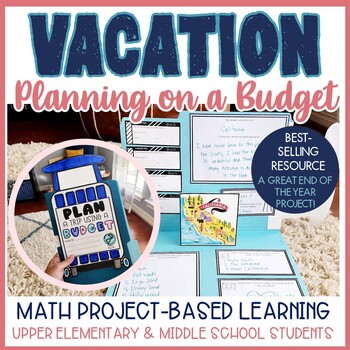
Plan a Trip Math Project Based Learning Vacation Real World Math Worksheets PBL

Plan a Camping Trip Project Based Learning Design PBL Activity Writing Math

Plan a Road Trip Activities Real World Math Project Travel Brochure Vacation
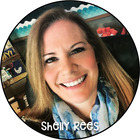
- Google Apps™

PBL Math Enrichment Project | Plan a Camping Trip PBL
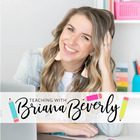
Silk Road Project : Plan Out a Road Trip Along the Silk Road

- Google Drive™ folder
- Internet Activities
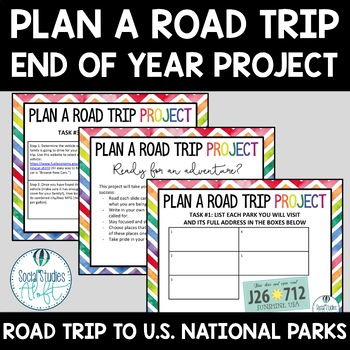
End of Year Project Plan a Road Trip Digital with Google Slides™

Fun End of Year Activity - Travel Project - Plan a Trip !
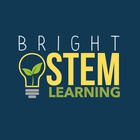
- Google Slides™
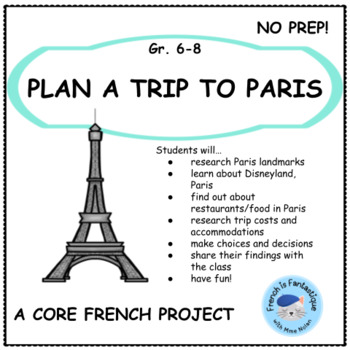
Core French Project : Plan a Trip to Paris, France

- Easel Activity
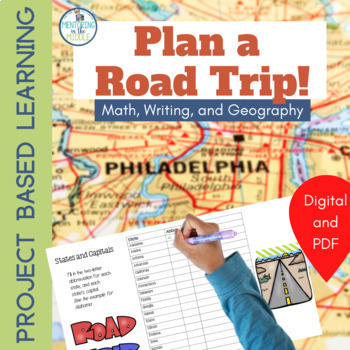
US Geography Plan a Vacation Project - Road Trip Activities with Math & Writing

Plan a Trip to Space Writing Project Based Learning PBL - 2nd-5th Grade
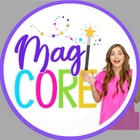
US Geography Road Trip - Plan a Vacation - Map Skills - Travel Project

PLAN A CRUISE Vacation Trip Math & Research Project Activity Based Learning

Spring Break Project : Plan a Trip
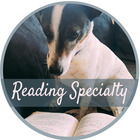
Budgeting & Planning a Trip Project - Personal Finance Class Activity Lesson
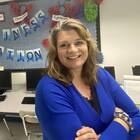
National Park Research & Design: 5E STEM Project ( Plan a trip !)
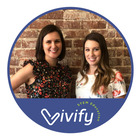
My Very Own Road Trip : Planning a Road Trip Project

Viajes Spanish Travel & Vacation Planning a Trip Project & Oral Presentation

Plan a Camping Trip a DIGITAL Project Based Learning PBL Distance Learning
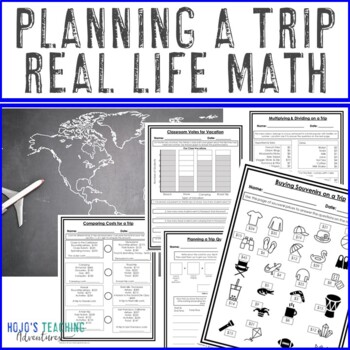
Real World Math: Planning a Trip | Project Based Learning PBL Unit
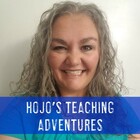
Elapsed Time Project : Planning a Field Trip
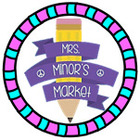
Project -Based Learning: Plan a Trip Around the World {Printable and Digital)

Planning a Field Trip - Math Project - Printable & Distance Learning Versions

Project Based Learning - Planning a Zoo Trip - Math & Writing Project
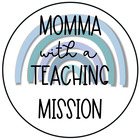
Plan A Class Field Trip Mini Project (Grades 4-6)

- We're hiring
- Help & FAQ
- Privacy policy
- Student privacy
- Terms of service
- Tell us what you think

IMAGES
VIDEO
COMMENTS
This project based learning activity will have your students planning a road trip from start to finish.Students can work independently or in small groups as they work through this PBL project. Although working in small groups can sometimes be more difficult, it also gives students opportunities to develop communication skills and inter-personal problem solving skills.
A great project for middle school. Here are the reasons a Plan a Road Trip Project works so well: It has real-world connections. When students plan their road trip, they will be selecting from actual locations. Who knows, the project might even inspire some of their future travels. Students are learning about Geography without even realizing it.
At a basic level, the assignment is to plan a trip from start to finish including where you wish to go and what you wish to see when you go there. But to turn this into a multifaceted learning experience we've outlined some of the subject area skills learners can build in the process. MATH. Determine the distance you'll have to travel to ...
Create a short movie that summarizes your trip. Produce it as if it were a promotion for your school or homeschool. Or produce it as a campaign that encourages parents, educators, and students to embrace travel as a learning tool. 30. Documentary: Students make mini-documentaries on their travel experience.
Canada Map and Math, Plan a Vacation Trip Activity Distance Learning. Created by. Nancy Wilcox Richards Canada. Distance learning will be no problem with this fun Canadian social studies project based learning activity about going on vacation! The activities include math, mapping, reading and writing skills.
They will refine their itinerary; book tours, lodging, car rental if needed, etc; complete pre-trip projects; create project proposals for on-site trip projects; and connect with trip experts. Even if educational travel isn't a reality at your school, consider assigning students to plan a theoretical school trip. The skills and knowledge that ...
A PBL PROJECT. PRINT. D I. G. CREATED BY: SHELLY. Print and Go! Assign through Google Drive! Students can complete independently or in small groups using a device of their choice. Choose One or Use All Three!
The great thing about using a travel plan project in the classroom is how versatile it can be. With appropriate scaffolding, teachers can use a travel plan to address standards and curriculum in any grade level and subject. Schools that have teachers working together in a "team" setting in which English, social studies, and math teachers ...
Description. This real world writing and math Plan a Road Trip project will have your students so engaged, they won't want the activity to end! In this unit, students the have opportunity to plan a trip and persuade others to visit their chosen destination! Now includes a bonus vacation journal and road trip activities!
Plan a Trip to Travel Abroad - Middle & High School Project Based Learning PBL. Rated 4 out of 5, based on 1 reviews. 4.0 ... Look no further than this comprehensive trip planning project! Designed to integrate English, Math, and Technology with my own 5th and 6th grade students, this project provides all the information students need to ...
6. Cost-Per-Serving Budget Project. Task your middle schoolers with creating a dinner meal that costs less than $2.50/person for a 4-person family. You'll need to prep this ahead of time by asking students to bring in grocery store circulars and coupons that they can find.
Day 2 of the road trip project was spent using gas mileage and fuel costs for various vehicles to determine which vehicle students would take on their road trip. On Day 3, we calculated food costs, hotel costs, and rental car costs. By the end of the 3-day project, students were much, much, much more comfortable working with ratios and proportions.
6th Grade Plan a Trip Project Middle School Dance; 6th Grade Plan a Trip Project; 8th Grade Graduation ; 9th Grade Sneak Peek; Oklahoma Virtual Charter Academy - The OVCA Hub 1117 S Douglas Blvd, Suite F Midwest City, OK 73130 Phone: (405) 259-9478 Fax: (405) 259-8332 [email protected] Presented ...
The project provides opportunities for students to: Brainstorm ideas for a field trip. Choose a field trip location. Plan a trip by choosing transportation and a lunch meal. Find the total spending amount while remaining within a budget. Complete a mock field trip letter. Reflect on the field trip and process.
Look no further than this comprehensive trip planning project! Designed to integrate English, Math, and Technology with my own 5th and 6th grade students, this project provides all the information students need to research a dream vacation abroad. With an easy-to-use format and step-by-step guidance, students will love diving into the research ...
How it Works. This math activity is great to do in groups of 3 to 4 kids. A group of students will get a city and a budget sheet to plan a vacation for themselves and a friend. They must pick their flight, car rental, hotel, activities, and food while they are on vacation. They must do all the activities while staying under their budget of $2500.
The PBL process includes the Entry Document, Knows and Needs to Know, Driving Question, Next Steps, the Social Contract, Journaling and Scaffolding, Workshops, Collaboration, and Presentations. The videos shows a plethora of scenes of students at work in classrooms and project planning rooms. The class portrayed is a team-taught humanities class.
For the resource to function correctly, it should be opened using Adobe Reader. Twinkl USA 3rd-5th Third Grade Math Multiplication & Division Skill Practice. Our Plan a Trip Activity is a fun and engaging project for any level of learners in your classroom! This resource allows students to show their creative side!
By Katie Dowd Jan 30, 2017. Field trips are awesome! Click ahead to read about the field trips every Bay Area kid has taken. Beck Diefenbach/Special to The Chronicle. Schools vary widely in the ...
Middle School Executive Functioning Activity Plan a Trip BUNDLE OT, Speech. Students who struggle with executive functioning skills such as planning and executing projects, turning in work on time, reading comprehension, and more will benefit from this bundle of 2 planning activities.Includes:One activity to plan a National Parks tour (3 parks ...
Sunrise is now enrolling for 2024-2025! if interested, please call the school at 408-659-4785 and leave a message, OR enroll online here Sunrise Middle School is a charter school at 24th and Julian Streets, San Jose, California for students who are seeking a holistic, meaningful and stimulating education. We believe school should be a place … Continue reading →
Moved Permanently. Redirecting to /browse?search=planning%20a%20trip%20project
To find out the latest news from Castillero Middle, please join our ParentSquare community. Read More about Catch our news and updates through ParentSquare! View All News. FOLLOW SAN José UNIFIED. ... To visit a classroom, please contact the school to schedule an appointment. CONTACT US. Main Office. 408-535-6385. Report an Absence. 408-287-6263.